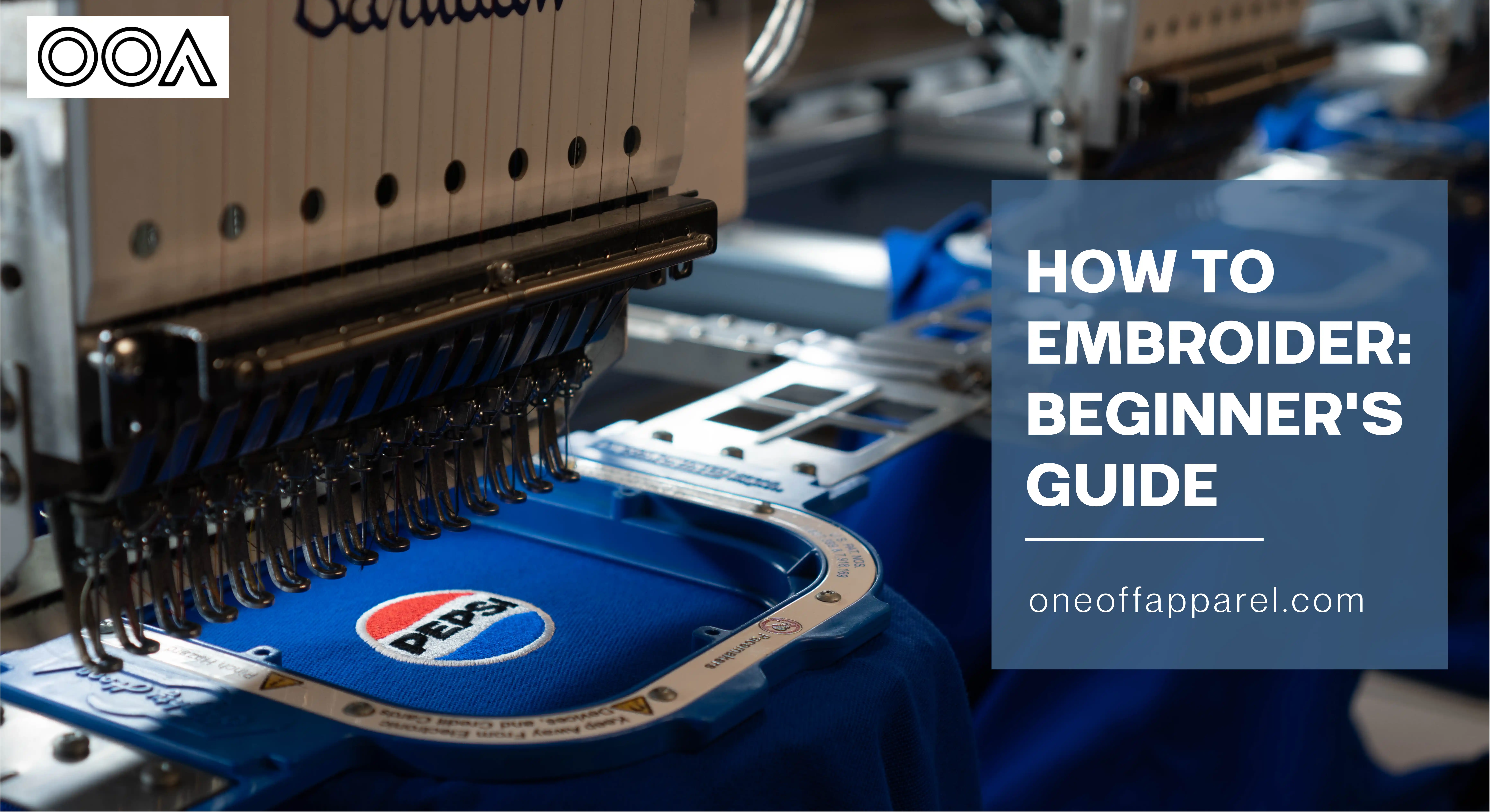
You can often tell high-quality custom apparel just by looking at it. Still searching on Google How to Embroider There’s a certain professional appearance—a depth and texture—that makes a logo feel like it truly belongs on the garment. That distinct quality is often the result of embroidery, a classic method for decorating apparel with thread.
It’s about creating a design that’s not just on the clothing, but a physical part of it. This in-depth look at how that process works, from a simple idea to a finished piece, presents an easy way to explore the craftsmanship involved, as shared by the specialists at One Off Apparel.
- How to Embroider: What Makes Embroidery Different and Unique?
- The Process: How to Do Embroidery and Bring a Design to Life in Thread
- What Is Embroidery? Exploring the Practical Side of Working with Thread
- How Can I Choose The Right Fabric For My Embroidery Project?
- What Are The Basic Techniques To Get Started With Embroidery?
- Conclusion: Key Takeaways on How to Embroidery for Beginners
How to Embroider: What Makes Embroidery Different and Unique?
So, what is surface embroidery? Simply put, it's the craft of sewing and stitching a design directly into a garment’s fabric. This creates a result that has a fundamentally different character. The design has a real physical presence. You can feel the texture of the threads and see the way light catches the subtle sheen of the design. It has a satisfying weight and a three-dimensional quality that makes it stand out, although completing some projects can take quite a bit of time. If you're learning how to do embroidery, surface embroidery is a great place to start due to its versatility and visual appeal.
This is also why embroidered designs are so famously durable. Because the threads are physically locked into the fabric, the design holds its shape exceptionally well. It’s made to handle the pulling and stretching of daily wear, making it the best bet for longevity, particularly when washed in cold water, and to hold up through countless trips through the washing machine. A professionally embroidered logo is built to last as long as the garment itself, and often even longer.
The Process: How to Do Embroidery and Bring a Design to Life in Thread
Understanding how to do hand embroidery in a modern shop is about understanding a smart combination of human skill and powerful machinery, much like watching TV while you create. While the machines do the repetitive work, everything depends on the first step, which is done entirely by a person using freehand drawing techniques to create their own unique embroidery pattern using different methods.
If you’re looking for embroidery tutorials to learn how to create your own pattern, you’re in the right place! If you’re looking for embroidery tutorials to learn how to embroider and create your own pattern, you’re in the right place!
This first step is called digitizing, and it's the most important part of the entire embroidery process. A trained technician, a digitizer, essentially acts as a translator. They take a customer’s 2D image, doodle, or logo and manually rebuild it as a digital stitch file—a detailed set of instructions that an embroidery machine can follow perfectly.
This is not an automated, push-button process. The digitizer decides the best way to render every part of the design in thread, considering the type of ink that may be used for transfers:
- They choose the right kind of stitch for each element: a smooth satin stitch for letters, a solid fill stitch for French knots in colored-in areas, and a precise back stitch for outlining.
- They map out the direction of every single stitch to create a clean look and the right texture, often considering inches to ensure precise measurements.
- They adjust the design for the specific type of fabric, adding a hidden foundation of underlay stitches so the design sits properly on soft fleece, or adjusting for the way a polo shirt might stretch. This is known as push/pull compensation.
This human expertise is what separates great embroidery from the rest. A poor digitizing job is the primary cause of puckering fabric and sloppy-looking designs.
Once the digitizer has created this perfect blueprint, the process becomes a model of precision. The shirt, hat, or jacket is secured in a hoop to keep it taut and then placed in the machine. The machine reads the file and stitches the design, often using multiple needles and colors to bring the image to life at high speed. Afterward, the item is unhooped, inspected, and any stray threads are trimmed for a clean, professional finish.
What Is Embroidery? Exploring the Practical Side of Working with Thread
Because embroidery uses real thread and strands of embroidery floss, there are a few practical things to keep in mind for your embroidery design. The technique is perfect for bold logos and clear graphics with distinct colors, especially when considering the width of the thread. However, it’s not designed for reproducing photorealistic images with subtle color blending, such as those that could benefit from a split stitch or running stitch and basic embroideries stitches. If you're learning how to embroidery, understanding these limitations will help you design more effectively.
Similarly, extremely tiny text or very fine delicate lines, as well as beads, can be difficult to stitch cleanly, especially when considering small details. To aid in this process, using embroidery scissors can help ensure you achieve a precise finish. A good rule of thumb is that if a detail is too small to draw clearly with a marker, it will be a challenge for a needle and thread.
This also explains why most professional shops have a minimum order. That initial digitizing process—the human-powered, expert setup—is a one-time job that requires the same effort whether the order is for one piece or one hundred. For the question of POD vs. MOQ embroidery, this setup is the deciding factor. To make it affordable, shops use a Minimum Order Quantity (MOQ). This approach spreads the cost of that expert setup across a number of pieces, making a top-quality product accessible for teams, companies, and events.
How Can I Choose The Right Fabric For My Embroidery Project?
Choosing the right fabric for embroidery with an embroideries hoop is crucial for a successful project, especially if it's your first time. Opt for tightly woven fabrics like cotton or linen, which provide a sturdy base. Consider the thread type, such as DMC embroidery floss, and design complexity, ensuring the fabric can support your stitches without puckering or distorting the overall appearance of your work.
What Are The Basic Techniques To Get Started With Embroidery?
To get started with embroideries, focus on a few basic techniques: the running stitch for outlines, the backstitch for detail, and the satin stitch for filling shapes. Practice these stitches on fabric to build confidence before advancing to more complex patterns and designs. Happy stitching!
Conclusion: Key Takeaways on How to Embroidery for Beginners
Embroidery is a choice for quality you can see and feel. It creates a professional, long-lasting design that becomes a permanent part of the garment. It’s a process that relies on a true partnership between human expertise and machine precision to get the job done right. This commitment to a durable, high-quality result is what makes stitched apparel so popular for organizations that want to look their best. For any project where that standard is the goal, working with people who truly understand the craft is the key to success—a principle that guides the work of the team at One Off Apparel. Whether you're exploring how to embroider or seeking experts to handle your design, choosing skilled professionals makes all the difference.
© Copyright All Rights Reserved

